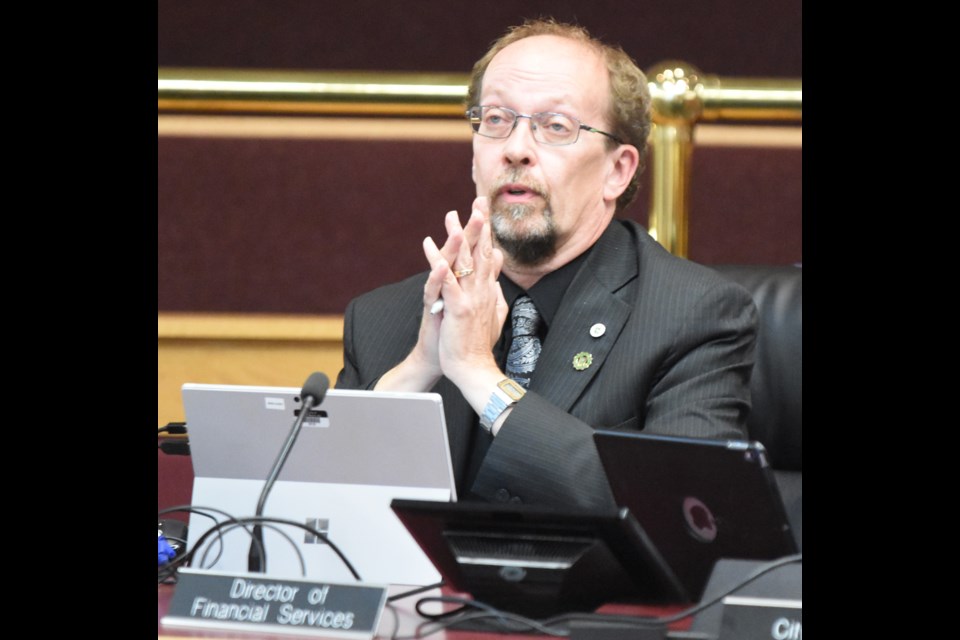More than $120 million in interest has been generated by the City of Moose Jaw’s reserves since the 1950s, which city administration says has kept taxes low and funded major capital projects.
There was more than $88 million in the municipality’s reserve accounts last year, with the capital expenditure fund containing $60.7 million and the equipment reserve fund having $27.7 million. These two funds provide the framework for capital projects, from equipment acquisition to roadway replacement, sidewalk rehabilitation, and recreation renewal.
The interest generated by the reserves comes in at just under $3.8 million each year, explained Brian Acker, director of financial services. A tax increase of roughly 13 per cent would be required to replace this amount. If it were possible to increase the rate of return by two per cent annually, an additional $2.9 million could be raised — or the equivalent of an additional 10 per cent in municipal taxation.
Acker provided a presentation on the municipality’s reserve system and the purpose and amount contained within each account, during city council’s recent executive committee meeting. Council voted 6-1 on a recommendation to have city administration develop a policy to establish existing reserve practices in a more permanent manner.
Coun. Brian Swanson was opposed.
Financing projects
The municipality has used a pay-as-you-go method to finance regular capital projects since the 1950s, Acker explained. The idea is it is better to save and earn interest than to borrow and pay interest. This way of paying is well suited for regular capital expenditure programs such as paved roads, sidewalks and other short-term projects.
This method also provides a framework that requires municipalities to live within their funding limitations.
A drawback of using this financing method, however, is it does not do well for unforeseen or major infrastructure projects. These projects — such as the multiplex — would need to be completed in a short period of time and do not allow for funding to accumulate.
Another drawback is this method relies on the interest earned on the reserves, which are subject to fluctuations in interest rates.
“The City of Moose Jaw utilizes debt financing for non-routine capital expenditures of an urgent nature or capital projects of very large magnitude,” Acker said.
An example of this, he pointed out, would be the wastewater treatment upgrade that cost $26.5 million. It was not possible to save up the necessary reserves in such a short time.
Saving vs. borrowing
Acker provided an example looking at how much a project worth $15 million would cost using pay-as-you-go or debt financing over a 15-year term.
To use debt financing would eventually cost the municipality $19.6 million while using pay-as-you-go financing would cost $9.2 million, which is a difference of $10.4 million.
“It’s huge when you look at that over a longer period of time,” he said.
Capital expenditure fund
The capital expenditure fund serves several purposes. Its primary role is to provide an ongoing stream of funding to the non-utility portion of the capital budget — general reserve portion — annually.
This fund is self-sustaining since the money is allowed to grow at the rate of inflation, where the remaining interest is used to fund a portion of the annual capital budget, Acker said. The fund maintains its income-generating power by allowing the real interest portion of interest earnings to flow to the general reserve that is spent each year.
“A secondary role of the capital expenditure fund is to provide financing for land development,” Acker said.
Equipment reserve fund
The ability of the equipment reserve to earn and accumulate interest significantly reduces the overall contribution for equipment replacement, Acker said. For example, a grader could have a lifespan of 15 years. Interest earned at six per cent during that time would generate $98,009, while contributions from the fund would be $151,991.
If the equipment reserve did not exist and money had to be borrowed, it would cost city hall $276,171 to purchase a $250,000 grader.
If city hall were to use some of the money accumulated for equipment replacement, it would lose interest revenue of $300,000 every year if, for example, $5 million was used for an initiative. Over a seven-year period that would translate into losing more than $2.5 million in interest.
“This shortfall would ultimately need to be made up by the citizens of Moose Jaw,” Acker added.
The next executive committee meeting is Tuesday, Oct. 15.




